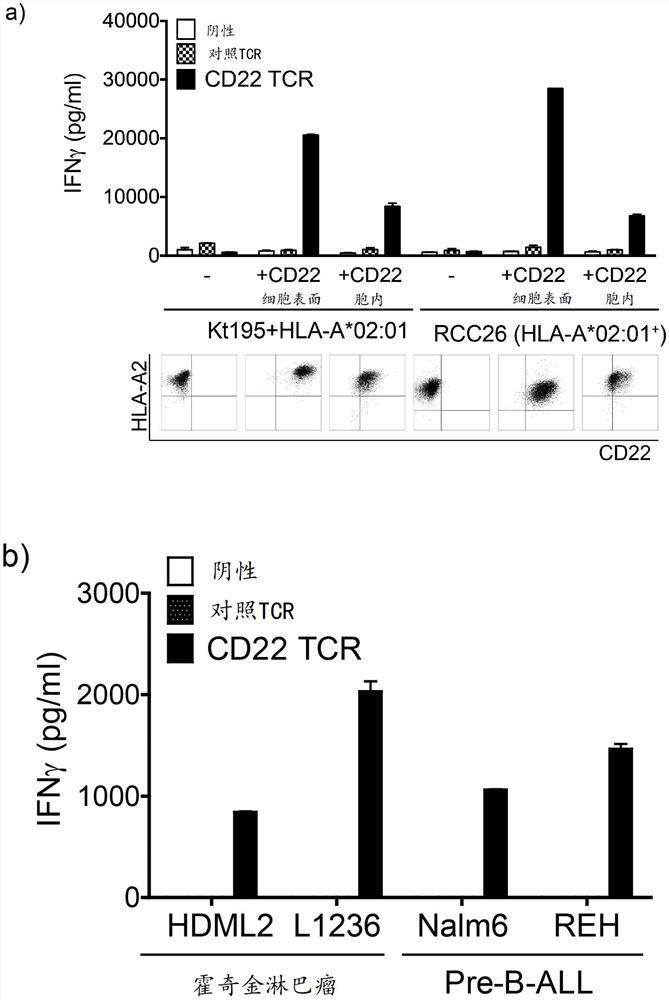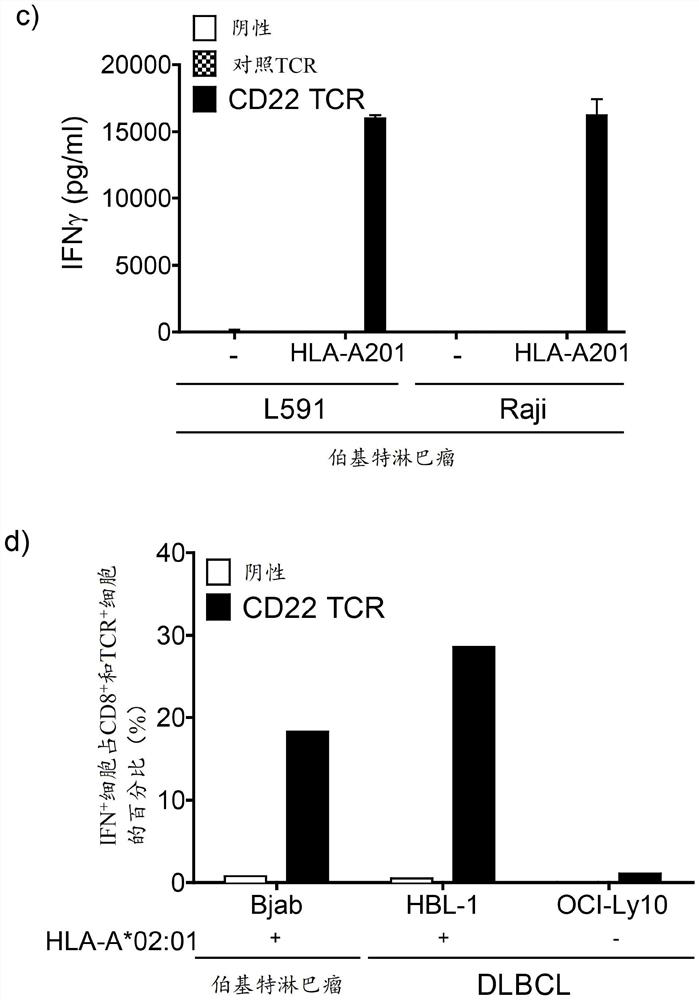Cd22-specific t cell receptors and adoptive t cell therapy for treatment of b cell malignancies
A specific, host cell-based technology for use in immunotherapy to address relapse and other issues
- Summary
- Abstract
- Description
- Claims
- Application Information
AI Technical Summary
Problems solved by technology
Method used
Image
Examples
Embodiment 1
[0094] Example 1: Generation of CD22-specific TCRs
[0095] T cells were negatively selected against self-antigens in the thymus to avoid autoimmune disease. To obtain CD22-specific TCRs, we used mouse models transgenic for the human TCRα and TCR b loci (Li et al., 2010, Nat. Med. 16, 1029-35) and available for appropriate epitope expression. Human HLA-A*02:01 transgene to generate murine T cells. Following immunization by gene gun with non-cognate human CD22 cDNA, we obtained specific immune responses against CD22, which were tested by co-culturing blood or splenocytes with NIH3T3 cells expressing human HLA-A2 and CD22. Further assessment of reactive T cells using a peptide library spanning CD22 and in silico predicted nonamers revealing the specificity of the peptide. Hassan et al. also described this epitope and eluted it from LCL (2013, MolCell Proteomics 12(7), 1829-43). The TCRs described here were isolated from mice inoculated four times with full-length CD22 DNA gen...
Embodiment 2
[0096] Example 2: CD22 TCR confers reactivity to CD22 expressing cell lines and primary tumor cells.
[0097] CD22 TCR reactivity was tested against recombinant and native CD22 expressing cells. Following TCR transduction, human peripheral blood lymphocytes (hPBL) were co-matched with two renal cell carcinoma cell lines expressing the full-length form of CD22 or a truncated molecule that lacked the transmembrane and intracellular sequences but still contained the epitope co-cultivate. The second version of CD22 is expressed only inside the cell. After 18-20 hours, the supernatants of the co-cultures were tested for secreted IFNγ by ELISA. CD22 TCR-transduced hPBL recognized two renal cell carcinoma cell lines expressing CD22 in full length or in the intracellular form ( figure 2 a). To further test the recognition of cells that naturally express CD22, CD22 TCR-transduced hPBLs were co-cultured with a panel of B cell lines from different malignancies ( figure 2 b-d). Ex...
Embodiment 3
[0099] Example 3: CD22 TCR delays tumor growth in a xenograft mouse model
[0100] To test the ability of CD22 TCR-transduced hPBL to kill tumor cells in vivo, NOG mice were injected with the pre-ALL B cell line Nalm6 transduced with firefly luciferase and the isogenic marker CD90.1, and four days later treated with hPBL deal with. Tumor growth was measured by firefly luciferase signaling, and blood was analyzed for the isogenic marker CD90.1 expressed by tumor cells as well as transferred T cells by CD8 and TCRvβ chain staining. CD22 TCR-transduced hPBL-transferred mice had a median survival of 53±7 days, while untreated or untransduced hPBL-transferred mice survived only 30±3 days or 28±0 days, respectively ( Figure 4 ).
PUM
 Login to View More
Login to View More Abstract
Description
Claims
Application Information
 Login to View More
Login to View More - R&D
- Intellectual Property
- Life Sciences
- Materials
- Tech Scout
- Unparalleled Data Quality
- Higher Quality Content
- 60% Fewer Hallucinations
Browse by: Latest US Patents, China's latest patents, Technical Efficacy Thesaurus, Application Domain, Technology Topic, Popular Technical Reports.
© 2025 PatSnap. All rights reserved.Legal|Privacy policy|Modern Slavery Act Transparency Statement|Sitemap|About US| Contact US: help@patsnap.com



